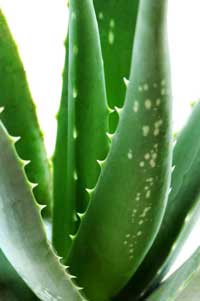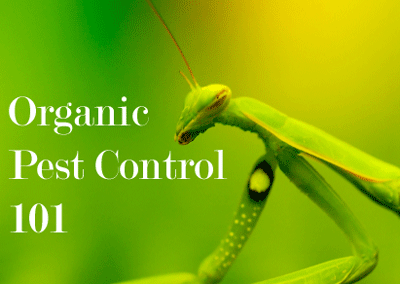While the above practices are good and desirable, they have to be done in combination with modern agricultural technology to increase productivity per unit area at shorter possible time. This is because the farming and food production areas do not increase, while population continues to increase. Feeding the growing world population needs the ingenuity of man, his talent and ability to invent and innovate as his Creator endowed in him
1.
Zero cultivation, following and allowing the soil to rest and rejuvenate.
Zero cultivation has been a long and original practice of man in its first attempt to grow crops. Even today, kaingineros, those who clear the forest or trees to grow seasonal crops do not cultivate the soil, since it is soft, friable and very fertile.
They just make small holes with pointed stick and drop seeds of rice, corn, vegetable or any crop they wish to grow. After one or two seasons, the soil hardens and hard to work on because of exposure to sunlight, necessitating soil cultivation, as the humus and organic content of the soil lessens. Then the farmer starts depending on commercial chemical fertilizers to replace nutrient loss. Unless organic compost materials are augmented to the soil, it will continue deteriorating.
To remedy the situation, following, or resting the field for one year, allowing all vegetation including weeds to grow, to bring back the natural fertility and bioorganic life into the soil. The use of organic fertilizer in combination to commercial chemical fertilizer will help preserve and sustain the productivity of the land. This has been the practice of ancient farming in Egypt, Babylon and Israel.
Tilling on the other hand promotes healthy soil in cultivated agricultural lands. It exposes the pest and soil born diseases, increases soil aeration and oxygen supply to microorganisms and promotes root growth and penetrates better as the soil is loose. This is done after destroying the natural soil environment through tillage.
In orchard farms (fruit tree plantations) where permanent trees are growing, zero tillage can be done, by growing low creeping leguminous cover crops like Arakis pintoy or Australian peanut weed (mani-mani) around and in between tree rows.
2.
Practice clean culture.
Keeping the field clean will help in preventing the growth and multiplication of pest and diseases. All plant waste and droppings should be gathered in one place to be composted and converted into organic fertilizer. Before using the composted organic materials for fertilizer, sanitize them first by exposing them to direct sunlight and dried to eliminate any diseases and eggs of insect pests. Defoliate over mature and diseased and infested leaves. Allow sunlight and aeration to penetrate between plants and within the foliage of trees. It will promote the growth of normal and healthy branches and eliminate abnormalities.
Cultivation and weed control will also help not only in soil aeration and softening of soil mass but will also reduce or disturb the breeding place of insect pests and fungal diseases.
To bring back the natural organic matter, these materials have to be incorporated with the soil as organic fertilizer and manure.
3.
Integrated Pest Management (IPM).
Integrated Pest Management (IPM) is a pest control program using combination of all practices to reduce or eliminate pest damage. This includes natural, biological and mechanical practices as well as bio and chemical pesticide application.
Among these practices include the following:
a.
Planting resistant or tolerant plant varieties. Growing indigenous crop varieties with reasonably high productivity should be encouraged. New breeds and genetically modified plants are being developed like Bt Corn which are resistant to corn borer infestation. New pest and disease resistant with high nutrient food value varieties are being bred and produced through genetic engineering (GM) and natural cross breeding.
b.
Timing planting so as the growing and fruiting stages does not coincide with inclement weather conditions and high incidence of pest population.
c.
Growing boarder or inter-crops that are repellant to insect pests.
d.
Practice clean culture, proper pruning and removal of diseases or infested plant parts especially with fruit trees. Remove all breeding places of insect pests and infected debris rotting near plants and field.
e.
Use organic fertilizer in combination with chemical fertilizer and supplement the field with compost and pro-biotic (bacteria, yeast & fungus). Sanitize compost and organic materials by exposing them to direct sunlight before applying it as fertilizer.
f.
Learn to prepare and use bioorganic pesticides and fungicides as substitute for toxic chemicals.
IPM may also include the following:
a.
Keep the garden small and the plants varied to prevent insect pests infestation. Solo or mono cropping tends to encourage the multiplication and outbreak of insect pest that feed on the particular plant grown. Multiple cropping or maintaining a green belt in the farm where vegetation is allowed to grow naturally will be a shelter and home to beneficial organisms, plants and animals including variety of insects that will check and control any outbreak of pests. This will be a natural check and balance.
b.
A basic principle in pest management: Plant the right crop on the right soil at the right time. Plant crops at a time when its particular pest is inactive.
c.
Plant indigenous cultivars or plant varieties native to the place. They are resistant to the pests and adapt very well to the local environment. The introduction of hi-breeds and high yielding commercial seeds have the tendency of eliminating indigenous varieties that are adopted to the environment as they have survive decades and century of adjustments.
d.
Healthy organic soil, grow healthy plants that resist pests and diseases. In soils applied with organic matter or humus, animal manure and compost, the soil host a wide variety of micro organisms that are harmful to nematodes and cause diseases to some insect pests thereby allowing the increase in population of beneficial organisms and insects.
e.
Crop rotation dissociates microorganism buildup around the plant roots as each crop has a characteristic microbial association. (Example is pro biotic and nitrogen fixing bacteria for legumes). New microbes are being developed to inoculate the seeds just before planting to introduce them into the soil and help in nitrogen fixation that enriches the soil.
f.
Aromatic herbs like mint, garlic, marigold, oregano, onion, control nematodes and repel insects, and should thus be grown as companion crop to your garden or farm.
g.
Tilling promotes healthy soil as it allows aeration bringing supply of oxygen promoting root growth and permit better root penetration breaking soil compaction. It exposes pest and soil born diseases to sunlight and disturbs their growth and multiplication. Sunlight is a very good and free sanitizer.
h.
Crop combination such as legumes and potatoes, control nematodes. Learn and find out the best crop partners and combinations. Planting tomatoes in between rows of eggplant will reduce fruit fly infestation on eggplant fruits. Growing marigold at the border of vegetable plots will also help repel some insect pests.
4.
Insect traps, lure and attractants.
There are many practical and inexpensive ways of controling and managing the population of insects pests in your garden and fields. Here are some of them that you may adopt:
a.
Light Traps - This practice have been found effective in unlighted areas. Light is provided with a basin of water. As the nocturnal insects are attracted to the light, they fly and dip into the water, or their wings are singed by the flame of the fire light.
b.
Lure with attractants – The lures derived from molasses and flower scent (odor), tantalize both male and female moths (the caterpillar adult stage) with the promise of nectar. The insects fly into the opening of a lure-dispensing trap, never to return.
c.
Chemical sex attractant – The use of PHEROMONE a chemical with female insect odor that confuses the male and attracts them to a bait treated with toxic insecticide or they fail to mate with the female insects.
d.
Blue electric lamp surrounded with electrically charged mess wire that electrocutes insects upon contact.
e.
Yellow pads – Most insect pests are attracted to bright yellow color. Yellow pad with grease or paste, attract insects during the day and sticks to the pad as they come in contact. The pad may also be treated with molasses and pesticide to give added attractant and killing potential.
5.
Use of Biological Pest and Disease Control.
The use of living plant and animals or living organisms to control pest and diseases are called Biological Control. They may be microorganisms such as bacteria, fungi, virus or bigger life forms like insects, worms, reptiles, mammal and birds. You can learn to increase the beneficial insects, microorganisms and other animal and plant life in your farms to counter pests and diseases harming your crops. Let us protect and increase these beneficial enemies of pests.
6.
Use of Organic Fertilizer
Fertilizers coming from fermented and decomposed organic materials are very nutritious safe fertilizer materials. They both enrich the soil plant food nutrients, improves the texture for easier root growth and preserve the soil life such as beneficial bacteria and fungi. We have several recommended formula in preparing organic fertilizer both liquid and solid form in this handbook.
7.
Used of Organic Pest and Disease Control
Herbal preparations to control pest and diseases can easily be made by farmers themselves since we have abundant plants in the Philippines that are suitable ingredient.
We offer you several formulations and methods of preparing Botanical or Herbal pest and diseases concoctions in this handbook to guide you make your own.
8.
Use of indigenous resistant plant varieties and strain.
There are several plant varieties and species that are found resistant or tolerant to certain prevalent pest and diseases. It will be wise for farmers to know them and grow these type of plants specially during months or season that certain pest and diseases are abundant.
9.
Practice crop rotation and following (resting the soil for some time).
Crop rotation or changing crops grown in certain areas to avoid the buildup of certain pest or disease affecting certain crops. Example, rotating onions with pepper or cassava. Resting the soil for one to two years to allow natural vegetation and the growth of natural enemies to introduce balance of nature, while enriching your soil environment for future crop production.
10.
Growing and inter-cropping of pest repellant and herbal plants.
There are crops that repel certain insect pests. Intercropping tomato with cabbages and cauliflower will help reduce the diamondback moth attacking cabbages. Learn what these crop combinations. You will not only reduce your cost of pest and disease control but may even increase your income per unit area with the crop combination.
11.
Integrated cropping pattern to prevent growth of toxic weeds.
Certain weeds are difficult to remove or control, like grasses. Planting vines and crawling crops like sweet potato and cover crops will help suppress weeds. Replacing the weeds with other beneficial creeping plants like Arakis pintoy (mani-mani) that covers the spaces between fruit trees and help supply nitrogen to the soil.
12.
Growing the right crop on the right soil, climate and at the right time.
There are suitable crops that are ideal for certain season of the year and suitable soils for their healthy and productive growth. Learn the nature of the plants and their preferences before deciding what to grow in your farm. The Philippines is a located in the tropical zone, so ideal for tropical crops and not much for temperate crops. Let us learn the advantages we have by growing the right crops best suited to our land with good market demand.
.jpg)













